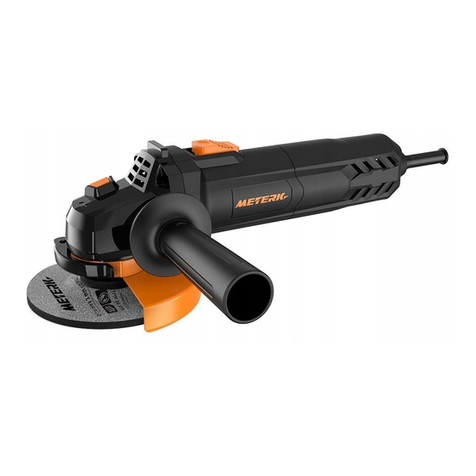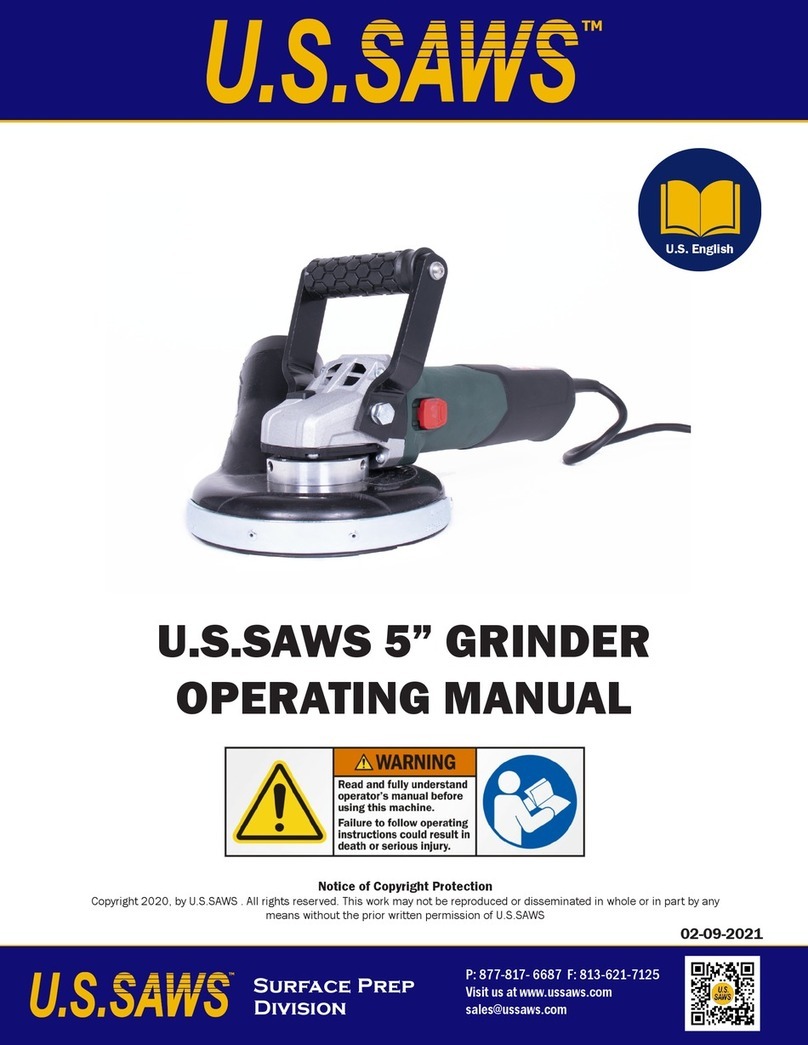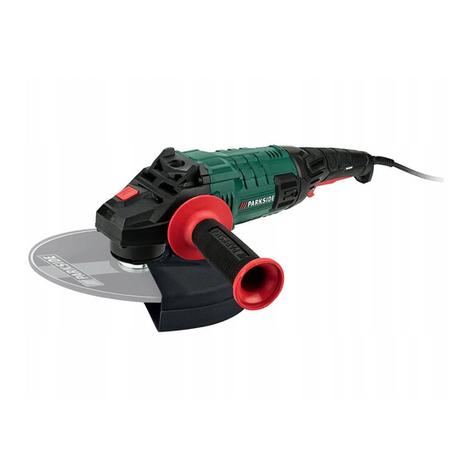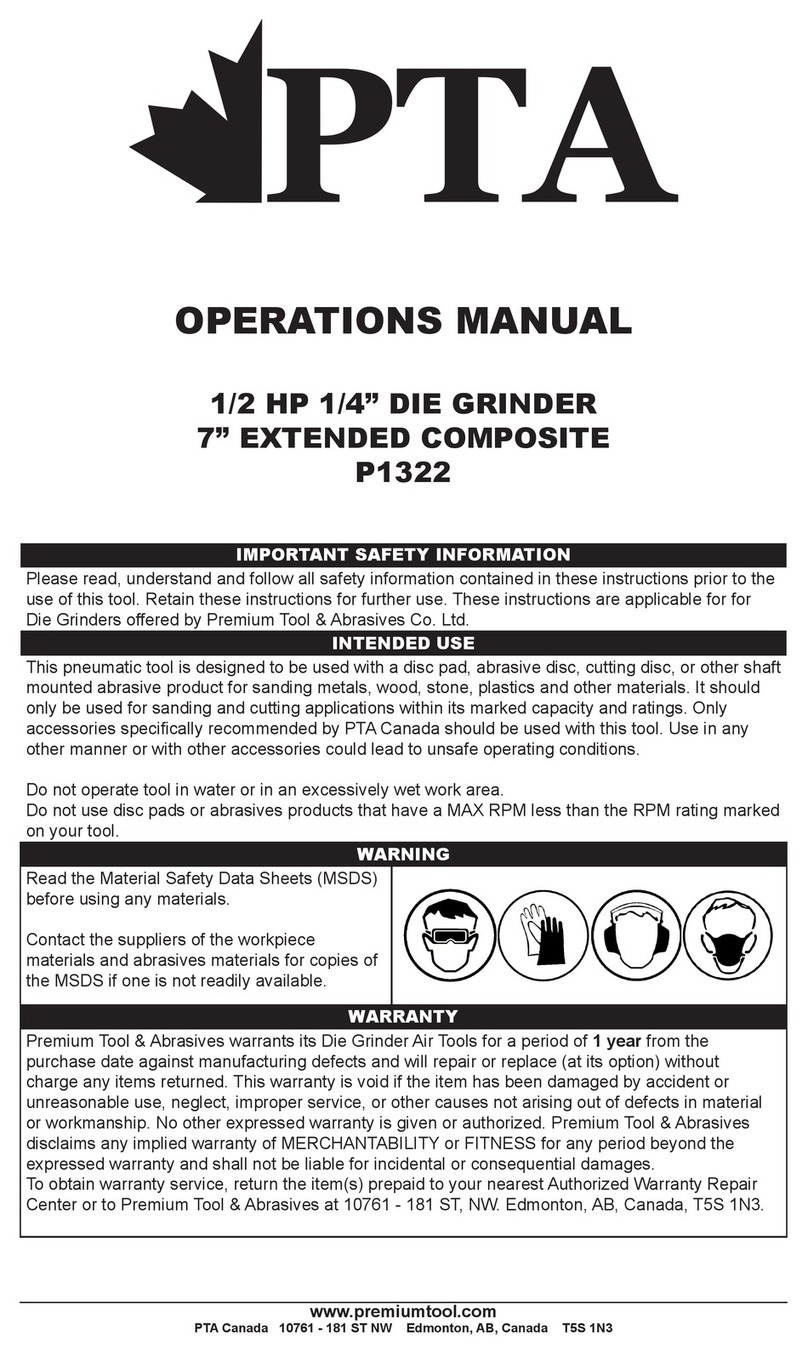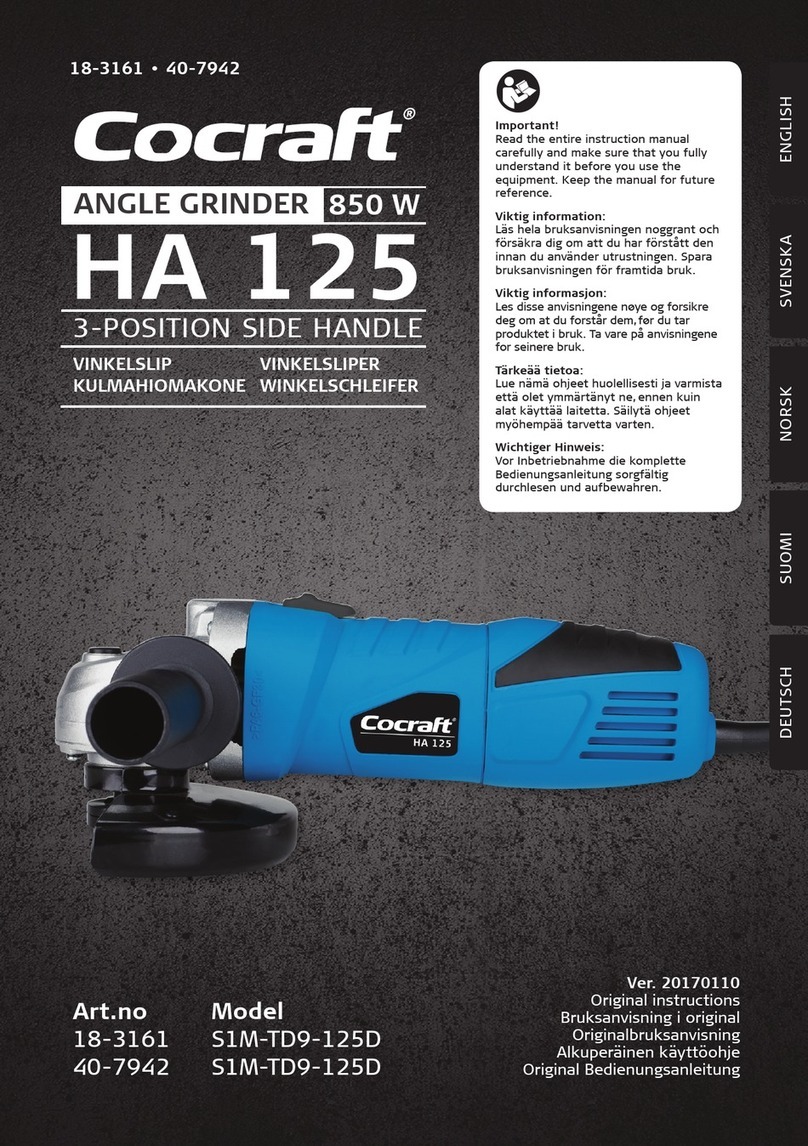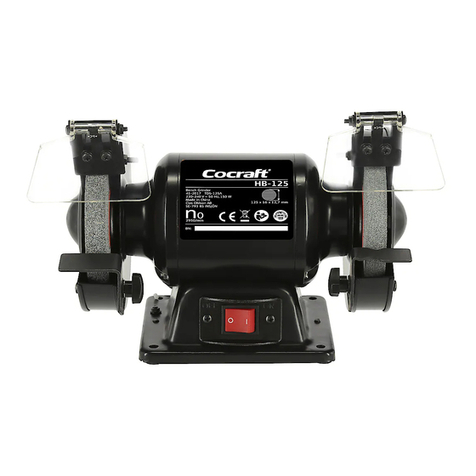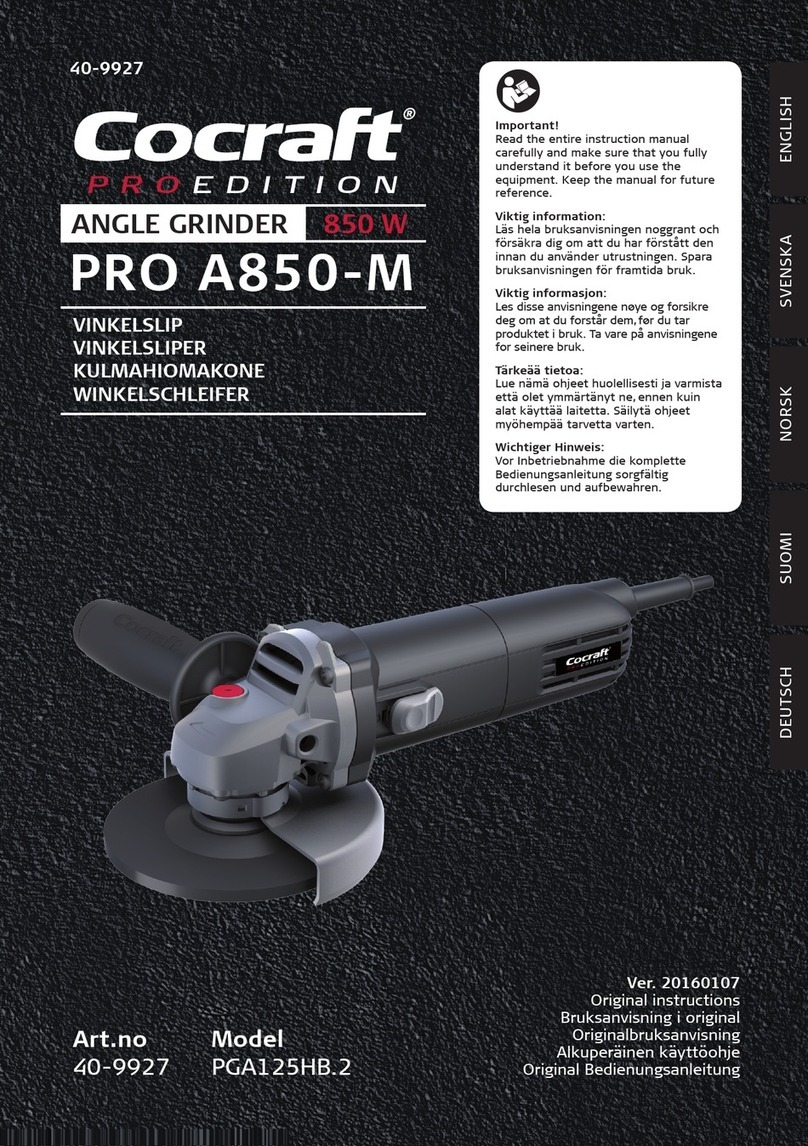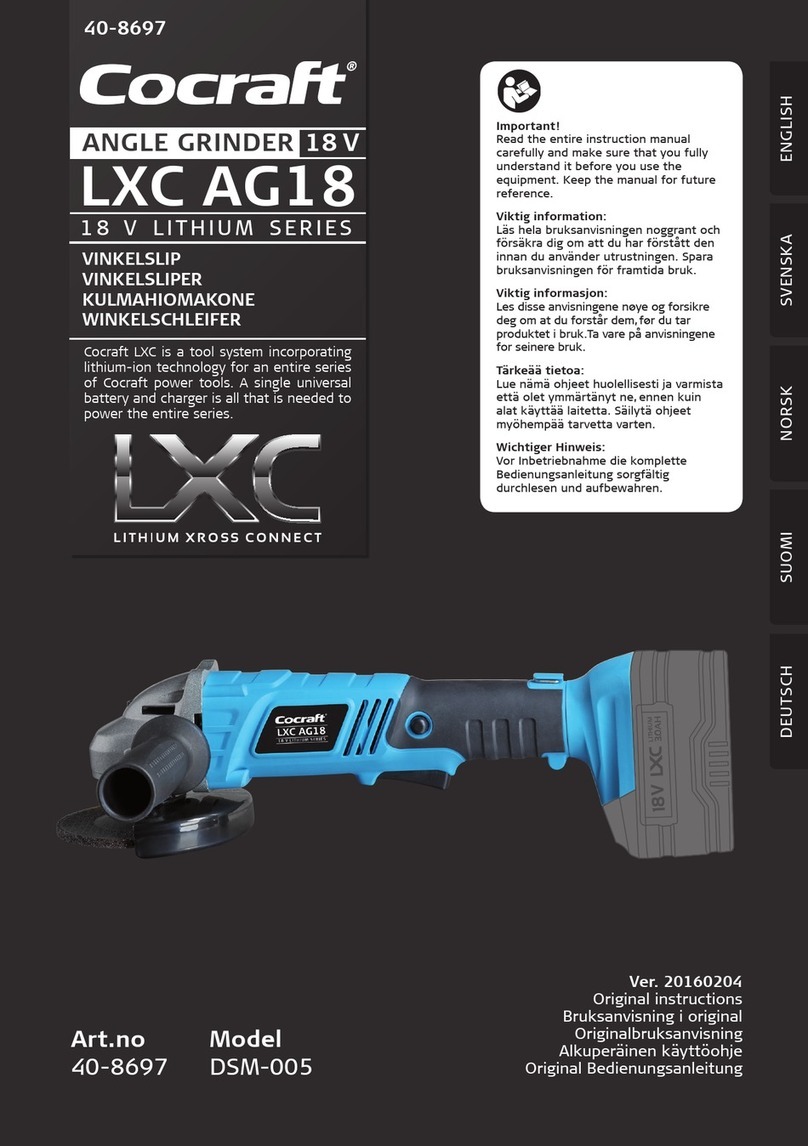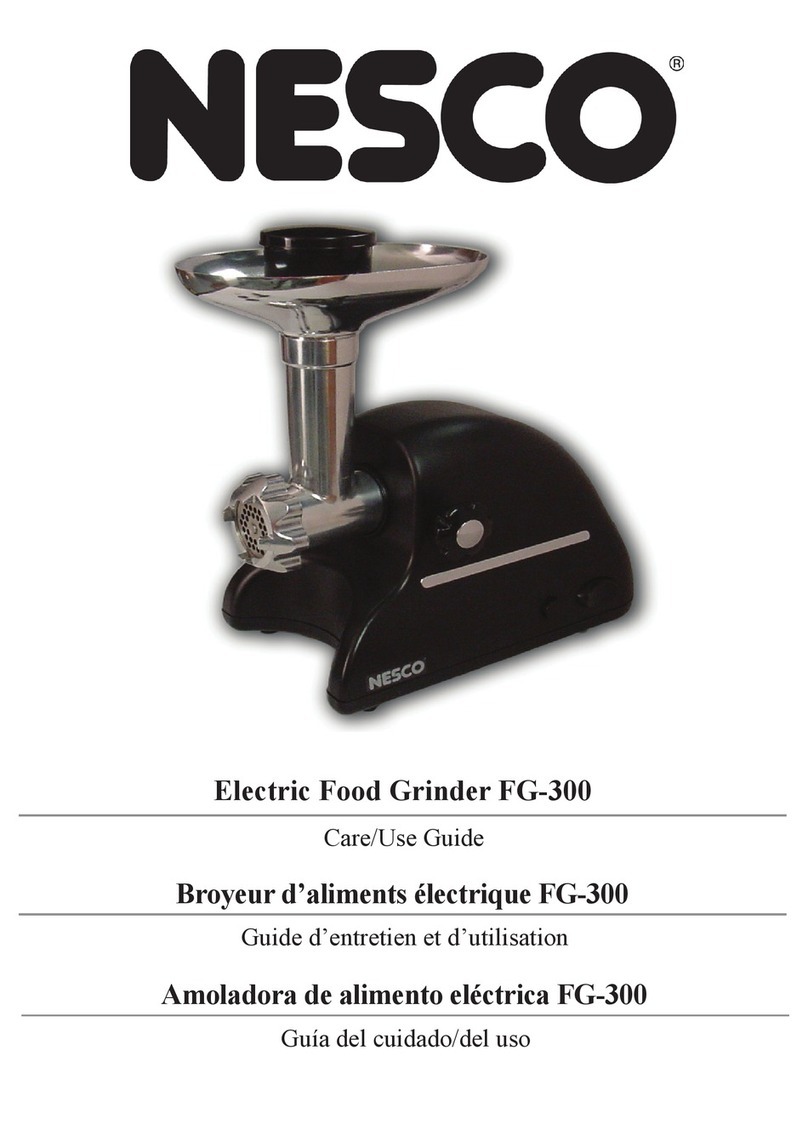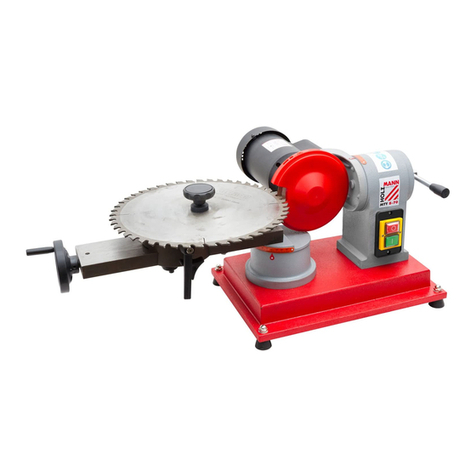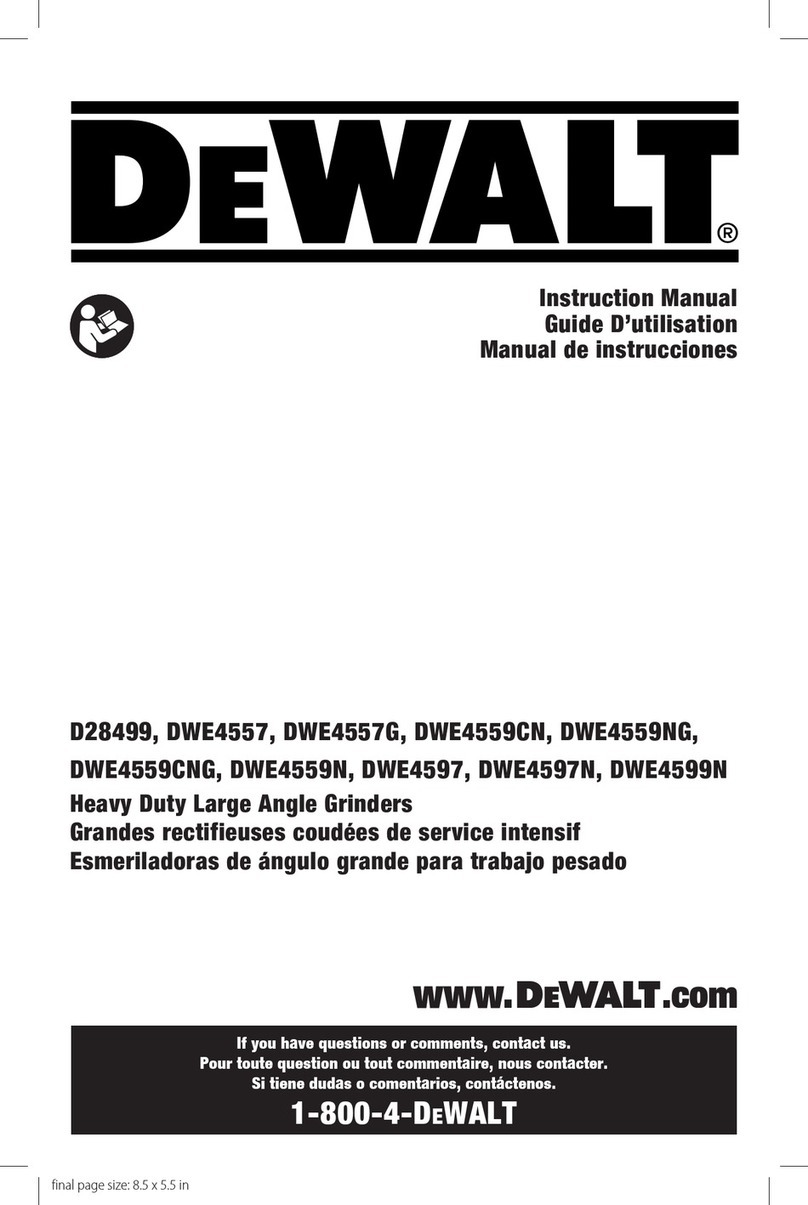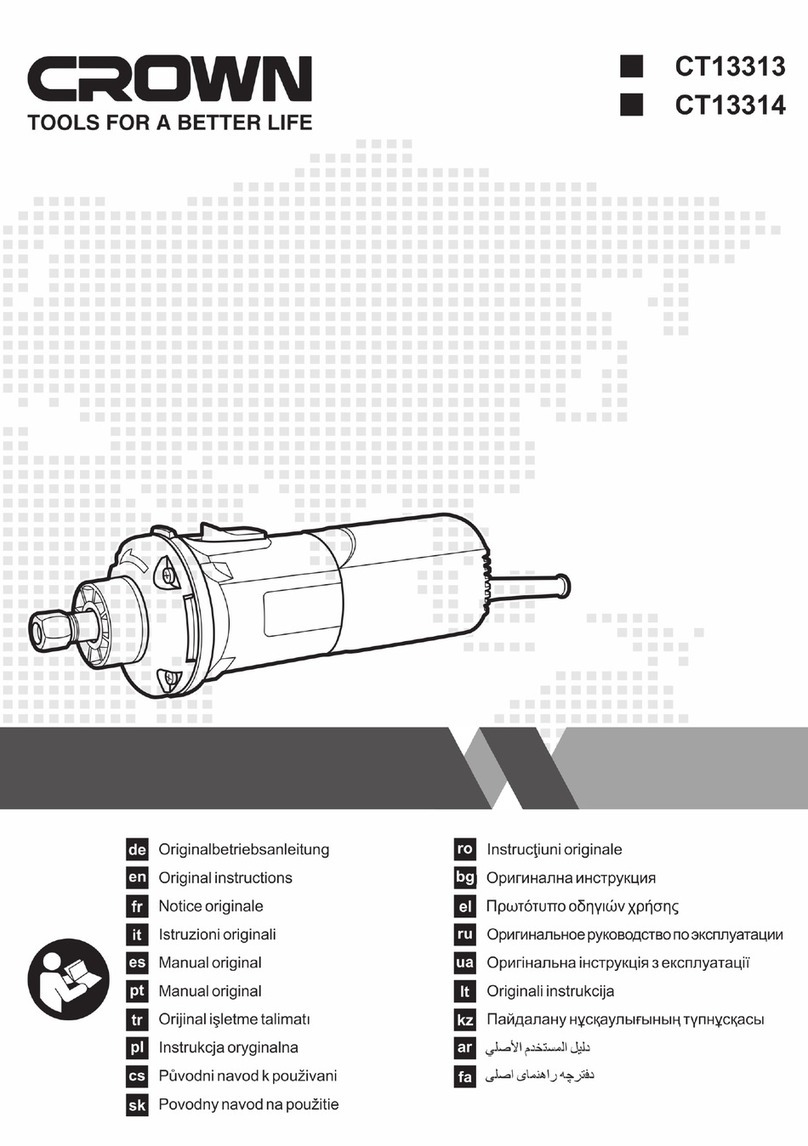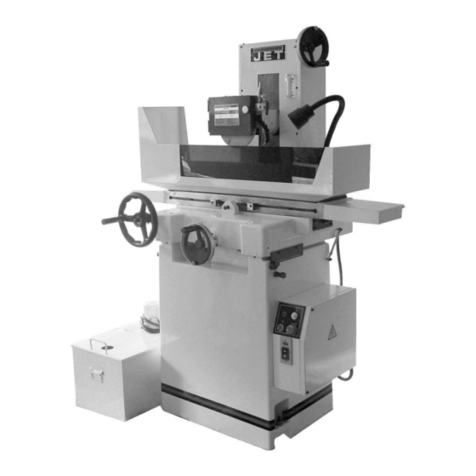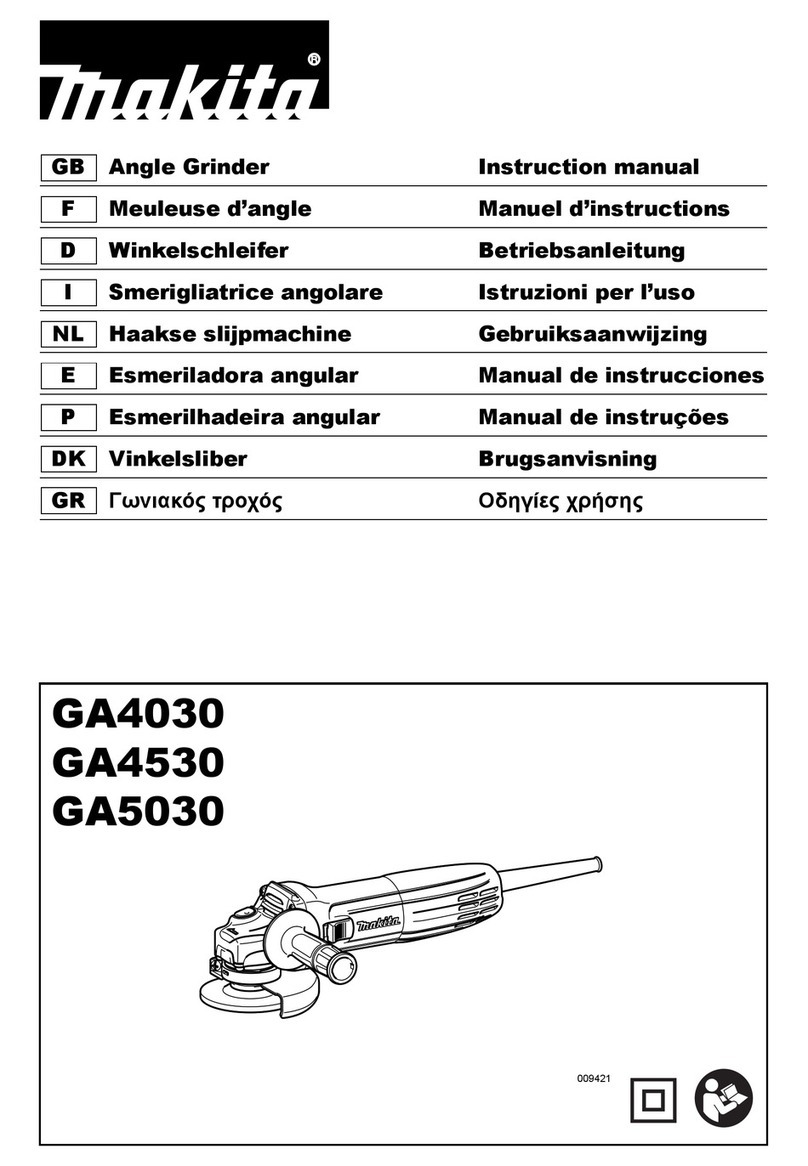
ENGLISH
6
• Wear personal protective equipment. Depending on how you use themachine; use
avisor/face protection or safety glasses. If necessary use amask, ear protection,
gloves, and apron/work clothing to protect you from small shards of metal or
splinters from thework object. Theeye protection you use must be able to
protect against flying debris produced in different working positions. Thebreathing
protection should be able to filter any particles produced by thework. Prolonged
exposure to high levels of noise can result in hearing damage.
• Keep children at asafe distance from thework area. Everyone who visits theplace
of work must wear personal protective equipment. Debris from theworkpiece or
from adamaged accessory can fly off and injury people outside of theimmediate
work area.
• Only hold thepower tool by its isolated gripping surfaces when working in
positions where thecut-off wheel might possibly cut through hidden cables or its
own mains lead. Cut-off wheels which come in contact with anelectric cable can
electrify metal parts of thepower tool and subject theuser to anelectric shock.
• Position themains lead well away from therotating accessory. If you lose control,
thelead can be sliced through or become entangled and pull your hand or arm
into therotating accessory.
• Never put thepower tool down before theaccessory has stopped completely.
Therotating accessory can become stuck in thematerial resulting in loss of control.
• Do not run thepower tool when you are carrying it. Unintentional contact with
therotating accessory can cause clothing to become caught and pull thetool
towards your body.
• Regularly clean themotor’s ventilation ports. Themotor’s fan pulls in dust, which
gets inside theouter casing and abuild up of this collected metal dust can lead to
electrical dangers.
• Do not use thepower tool near flammable material. Sparks can easily ignite
flammable material.
• Do not use accessories, which require liquid coolants. Theuse of water or other
liquid coolants can result in electric shocks or electrocution.
Kickback and related warnings
Akickback is asudden counteraction to ajammed or stuck disc, backing plate, brush,
or some other accessory. Ajammed or stuck rotating accessory results in thepower
tool thrusting violently in theopposite direction of theaccessory’s rotation at thepoint
of binding.
For example, if agrinding wheel gets stuck or is jammed into theworkpiece, theedge
of thegrinding wheel can grab onto theworkpiece and either dig itself down deeper
or kick upwards. Thegrinding wheel is either thrown towards or away from theuser
depending on therotation of thegrinding wheel. Thegrinding wheel can also break
under these circumstances.
Kickbacks are theresult of thepower tool being used in anincorrect manner, on
incorrect objects, or under incorrect conditions and can be avoided by observing
thefollowing precautions.
